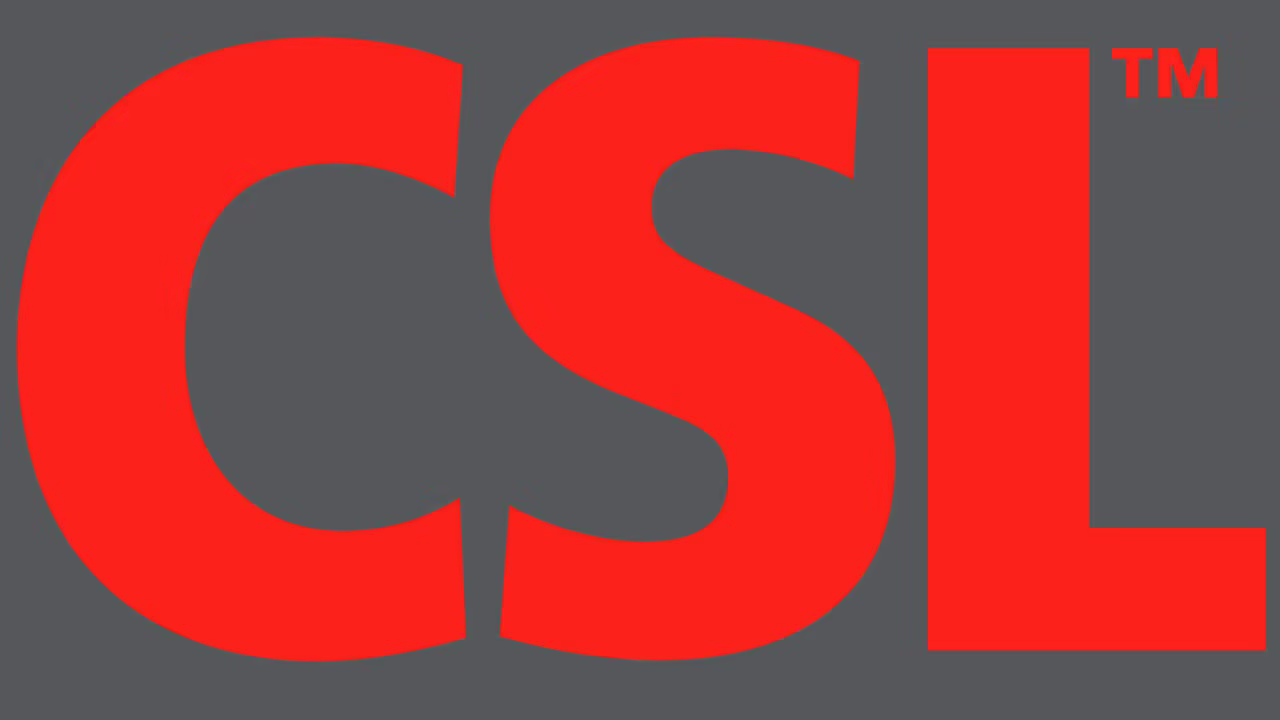Commonwealth Serum Laboratories (CSL) is a leading biotechnology company offering an extensive range of products, from recombinant therapies to plasma and vaccines.
CSL was formed by the Federal Government of Australia in 1916 and was privatized in 1994. Today, it is the largest and fastest-growing protein-based biotechnology company.
The CSL brand operates through two segments: CSL Behring and Seqirus. The former markets and manufacturers plasma alongside conducting research on it. Whereas the latter is responsible for segmenting the products and distribution.
CSL’s success is evident from its growing size, stature, and reputation.

Interesting 2021 Statistics Highlighting CSL’s Performance
- Revenue: $10.3 billion
- Net Income: $2.4 billion
- Market Capitalization: $95.9 billion
- Number of employees: 25,000+
- Stock Price: $290.6 (as on 25th July 2022)
- Operations in 35+ countries
- R&D investment in last 5 years: $4.1 billion
Since 1916, the company has come a long way, treating multiple types of patients who suffer from cardiovascular diseases, respiratory or metabolic.
Let’s now delve into CSL’s strategic journey of growth…
CSL Brand is Formed By The Australian Government Amidst World War I
The journey of CSL began in 1916.
Safe to say, the company had very humble beginnings, and no one at the time would have predicted it to become a market leader a century down the line.
The CSL Brand Is Formed
During the first world war, death and disease were rampant, yet the import of medicine and treatment into Australia was halted.
The Australian government thus took matters into its own hands and established the Commonwealth Serum Laboratories (CSL) in 1916.
CSL’s first director was William Penfold. Born in Brampton, England, in 1875, he had developed a worldwide reputation as an expert bacteriologist.
Under him, CSL commenced operation at the Royal Melbourne Hospital's vacant Walter and Eliza Hall Institute building but later moved to Parkville, where a building was specifically developed for them.
Penfold's organizational skills effectively set up the installation of laboratories, training employees, and devised equipment.
CSL Establishes Its Name With Vaccine Innovation
As the spread of the flu gained momentum in Australia, so did CSL's innovation.
The Spanish Flu brought about the worst pandemic witnessed on this Earth. Approximately 40 percent of Australia's population fell ill, whereas 15,000 people lost the battle for their lives.
To alleviate Australia's dependence on vaccines that were imported, CSL developed its first vaccine in 1918.
The vaccine strategically catered to secondary, although more serious, bacterial infections that caused death instead of the virus itself.
In the time span of less than one and a half years, between 15th October 1918 and 15th March 1919, CSL produced three million doses of the vaccine.
Setting aside profit-seeking mechanisms and corporate growth, the vaccines were sold to Australian troops and civilians free of cost.

CSL’s Achievement Of Finding Cure For Snake Venom
In 1928, CSL collaborated with Charles Kellaway at the Hall Institute to research snake venom and manufacture an antivenom.
The successful clinical testing of antivenene against the Notechis scutatus snake bite was completed in 1930. A year later, in 1931, it was released commercially.
The snake showman and herpetologist Tom Eades directed the transformation of the research on snake venoms from the Hall Institute to CSL entirely.
CSL’s leadership had been seeking research opportunities for the community ever since its birth, and snake venom provided the ideal outcome.
CSL’s laboratories' research for snake venom stands for the commencement of impeccable research that CSL has been doing to date.
The joint research Venter with the Hall Institute was sustained until World War II, especially in the project about viral diseases such as polio and influenza.
Key Takeaway 1: Identify Gaps In The Market To Increase Market Share
Establishing a firm in a market already saturated by competitors means that a business can only acquire a small market share.
On the other hand, creating a company to manufacture products for which there is always high demand and no real competitor means capturing the entire market if you go about it correctly.
That’s exactly what the Australian Government did by establishing CSL. The demand for medical goods was at a high following the WW1 yet the country relied on imported goods. The goverment’s support allowed CSL to cater to this demand which its competitors could not do. Thus, it had the entire market to itself.
From there, from manufacturing Spanish Flu vaccines to antivenoms, the company grew by catering to high demands in a competition-less market.
CSL’s Transformational Years In The Mid-20th Century
Frank M. Burnet and Esmond B. Keogh were coordinating the joint venture on polio and influenza at Hall institute around 1944.
Keogh played an important role in the establishment of penicillin production at CSL during WWII - a critical wartime achievement.
After this, a series of medical breakthroughs started for CSL.
CSL Innovation At Play: Development Of A Serum For Brain Disease
Scientists at CSL began the manufacture of an anti-encephalitis serum in 1951. Encephalitis is a type of brain inflammation caused by antibodies.
They were "growing" it from a specimen of a serum that they received from America during the war.
The officials were developing a process for the mass-production of the serum as if an epidemic started, they would be able to supply enough serum to stop it.
Doctors at the Walter and Eliza Hall Institute isolated and identified "Japanese Encephalitis Type B" a virus that killed a five-year-old girl in the Goulburn Valley, Central Victoria.
Research workers at CSL were using the isolated virus in tests to discover - whether Japanese encephalitis caused all the cases in the Murray Valley epidemic. If all cases were identical, the doctors decided to begin to develop an Australian vaccine.
CSL Introduces Albumin As Replacement To Plasma
In 1952, CSL’s operations started off with their plasma fractionation project. CSL in Melbourne was preparing to begin mass production of blood albumin to replace serum in hospitals throughout Australia.
Albumin, the protein property of blood cells, is regarded by doctors as superior to plasma and all other substitutes for serum.
The director of the Red Cross Blood Transfusion Centre in Sydney (Dr. R. J. Walsh) declared that the production of albumin in the same quantity as serum would require about 10% more blood donors.
Dr. Walsh said that dextran, which the American army had recently decided to use instead of serum, was an inferior alternative to the serum.
Serum (blood plasma) had the principal substitute for real blood as a resuscitator since a blood transfusion service was formed in Australia in 1929.
It is composed of blood from which fibrin and the red cells have been removed. It restores the protein materials lost from the blood in cases of burning or natural deficiencies but is not a substitute for blood when life is endangered by the loss of blood itself.
Mass production of blood albumin to replace plasma in hospitals throughout Australia was planned by CSL in 1953.
CSL’s Innovation in Snake Antivenoms
By 1953, once a month, a parcel of desiccated snake venom used to be sent from Ocean Beach Aquarium via Woy Woy to CSL, Melbourne.
The venom crystals were kept indefinitely and were effective against every kind of snakebite. The venom was most effective against tiger snake bites and least effective against the brown snake.
From then onwards, the range of antivenoms increased, including those against other snake species and spiders.
A major chunk of this breakthrough work was done under the direction of Saul Wiener. From 1966 until the mid-1990s, venom research was coordinated by the eccentric Struan Sutherland, who in 1979 released new guidelines for snakebite first aid and a new test for snakebites that would identify which snake had envenomated the victim.
CSL Facilitates Rapid Adoption & Production Of Polio Vaccine
According to the Australia Department of Health, the mass vaccination against polio began in 1956 with the Salk inactivated polio vaccine (IPV) in a publicly funded program. Its impact was quite significant and dramatic, to say the least.
In September 1961, a serious outbreak of polio occurred in Hull. Very quickly, the number of infected people in the hospitals rose.
As the inactivated vaccine was not able to halt the epidemic, the Hull Health Authority asked the Ministry of Health's permission to use OPV.
CSL agreed immediately, as it had the necessary supplies for such emergencies. Within a few days in mid-October, 385,000 people were vaccinated in Hull and the surrounding towns. By the end of the month, the epidemic was under control. After this success, the Sabin vaccine became widely accepted in the UK.

Key Takeaway 2: Invest In R&D To Create New Opportunities
From brain disease to polio and snake venoms, Australia faced the threat of multiple medical crises.
Through its proactive research initiatives, CSL was able to quickly develop, and mass produce antidotes and cures for these ailments.
As a result, the company established a reputation for providing the right products at the right time which enabled it to succeed in the long run.
CSL On Its Way To Privatization In The 1990s
In 1971, F. J. Davis was reappointed chairman of the CSL Commission. R. T. Shelmerdine was also reappointed as vice chairman.
From here onwards, CSL went through a roller-coaster ride of leadership change and political intervention, which led to many problems until the government agreed to privatize CSL.
CSL Pricing Strategy Analysis
CSL was forced to overcharge the Australian public for penicillin, the Labor Party's spokesman on health and welfare, Hayden, proclaimed in 1972.
In a statement issued in Canberra, Hayden said the cost of Australian-produced penicillin was about 2 times greater than the cost of penicillin in Britain.
He said the laboratories were overcharging in a desperate attempt to pay their way, including the cost of uneconomic research programs imposed on them by the Federal Government.
Hayden accused the Federal Government of imposing policies on CSL operations that were slowly strangling the life out of them.
In the final result, the Australian public was subsidizing the cost of expensive research programs.
It also meant that commercial manufacturers of penicillin, unaffected by the imposition of high-cost, uneconomic research and development, would enjoy the benefits of the price-setting established by CSL and gather substantial windfall profit gains.
The Federal Labor government used CSL to carry out research into serum and vaccines because it was the most experienced organization to do this and had world-class professional staff to conduct research.
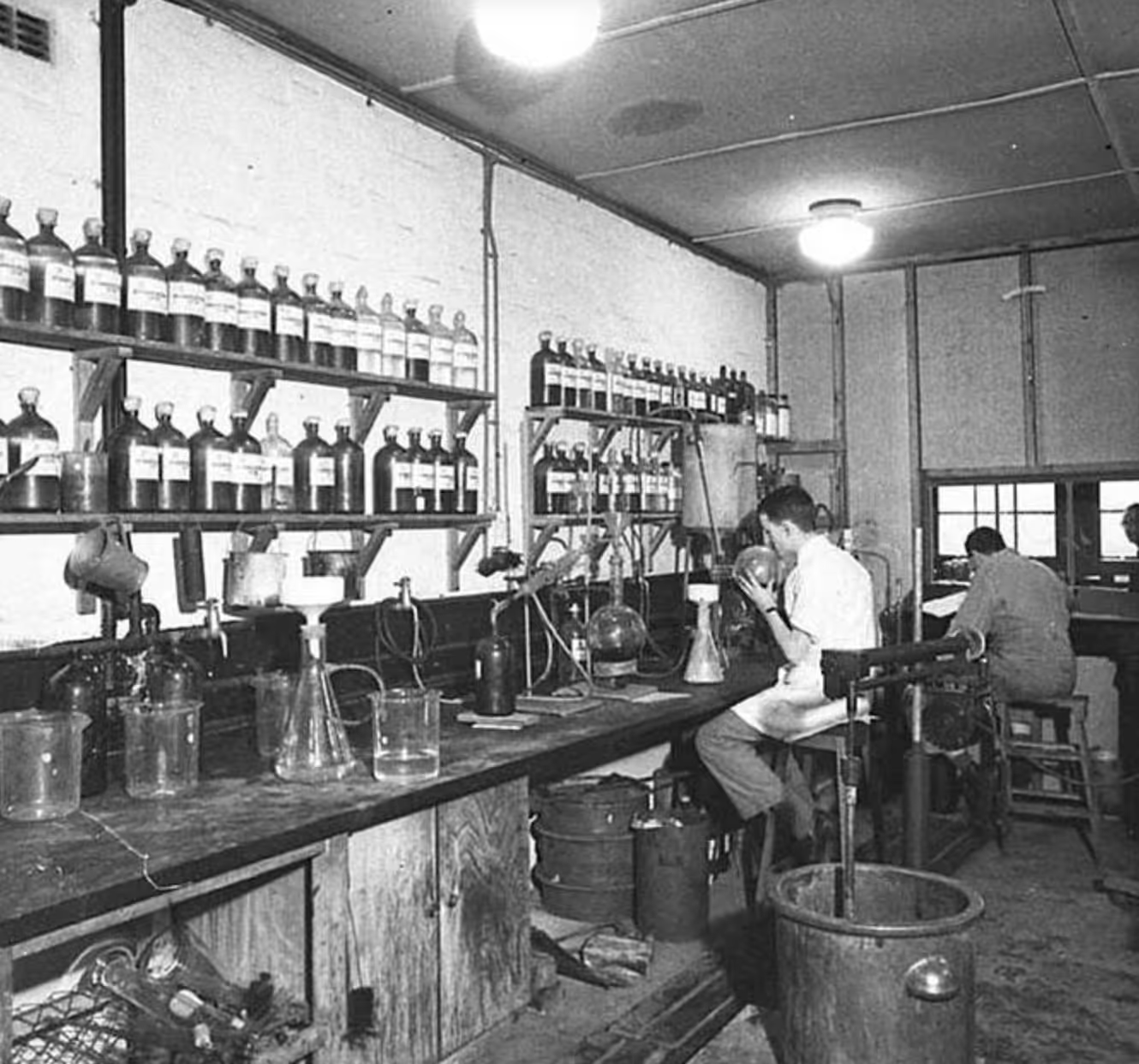
Australian Government Dithers On Penicillin
In 1979, the Australian Government was wrestling with a decision to choose between the government-owned CSL and an American firm as the sole manufacturer of penicillin in Australia.
The Departments of Health and Defense considered that in the national interest penicillin should continue to be manufactured in Australia. It was the only antibiotic fully manufactured in Australia, and its derivatives were the safest and most widely used antibiotics.
The Department of Industry and Commerce had taken a neutral position in Cabinet between the two contenders, but the Minister, Lynch, had favored the US private-enterprise firm, Abbott Laboratories Pty Ltd, as the sole producer.
CSL Becomes A Private Company In 1994
CSL needed a new fractionation plant to treat plasma products in the 1990s.
The Keating Government planned to float off 100% of its most profitable business enterprise, the Commonwealth Serum Laboratories Ltd, which could raise more than $100 million.
In 1992, announced in the Budget, there was a 5% limit on any individual foreign shareholding to protect CSL's alliances with foreign companies, which could have put at risk if a foreign company took a large stake. During the Keating Government, CSL had a turnover of $156 million and a pre-tax profit of $21 million.
In 1994, the Commonwealth company was privatized as “CSL Ltd.” and was publicly listed and traded on the Australian Securities Exchange, raising $299 million.
The company completed an initial public offering (IPO) in June 1994 at A$2.30 per share. The share price of $2.30 was a spectacular bargain for investors, who ended up getting their money back 500 times over. That beat even the massively oversubscribed float of the Commonwealth Bank, where investors got about 50 times their money back.
CSL stock is part of the S&P/ASX 20 Index today.
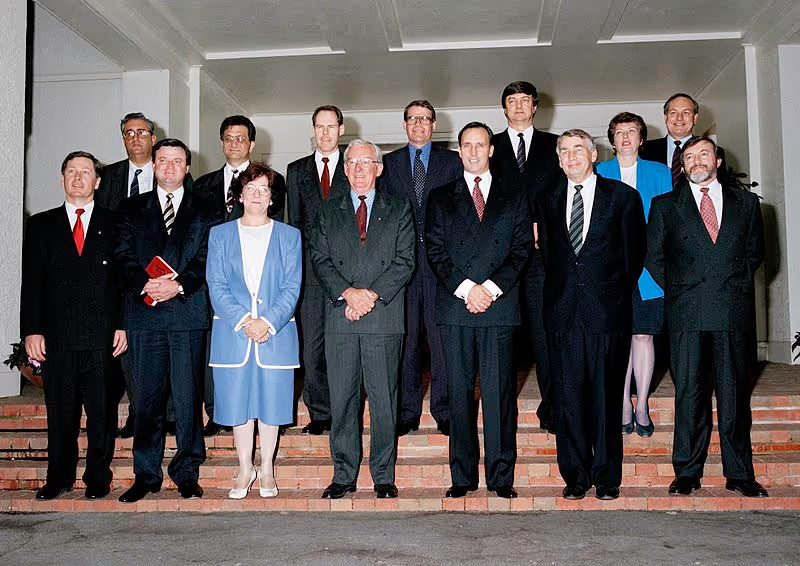
Key Takeaway 3: Business Growth Requires Autonomy in Strategy Formulation
While being a government-owned company had allowed CSL to establish its position in the market, it became increasingly difficult for it to make growth-focused decisions as the government's objectives would come in the way.
Soon, the company realized that if it wanted to prosper, it needed complete control of its decision and strategy making. Hence, privatization and separation from the government followed, and it enabled the company to focus on growth and profitability.
Similarly, any organization that aims to grow needs should have clarity in its motives and not be dependent on the goals of other players, be it the competition or the government.
CSL Dominates Through Acquisitions In The 21st Century
At the dawn of the 21st century, CSL’s top manager Brian McNamee realized something about the future of CSL.
If the company was to stay in the top-tier blood products industry, then it will demand diverse products, a robust R&D supply line, and highly efficient production lines.
CSL’s Acquisitions Enable It To Become A Market Leader
In 2000, CSL started the process of buying the Swiss plasma facility, ZLB Bioplasma AG.
The acquisition was by acquiring 4.6 million shares of Haemacure Corp. CSL has started unleashing its financial prowess to maintain its global rank in medicine.
Acquisition of Haemacure’s plasma franation arm, ZLB, was part of CSL’s greater plan.
In 2003, CSL started hunting for another European company and found Aventis. With a deal closing at $925 million, Aventis agreed to sell its Behring unit to CSL.
This acquisition marked CSL’s supremacy as the world’s largest plasma products producer by 2004.
With the combination of ZLB and Aventis Behring, CSL formed ZLB Behring in 2004 with its headquarters in USA under Peter Turner.
The combination of ZLB Bioplasma´s IVIG production capabilities with Aventis Behring´s coagulation products, haemophilia expertise and specialty products coupled with global marketing reach represented a compelling opportunity for CSL.
CSL’s management knew that the integration planning during the pre-closing period had continued to give them confidence that the acquisition would deliver enhanced economic returns.
The plan for integration and talented people in the combined business was to make the changes required to achieve strong leadership in a competitive western market.
CSL had not only achieved a name in the medical products market by the 2010s. It was the second largest Australian publicly listed company, with its share price above $100.
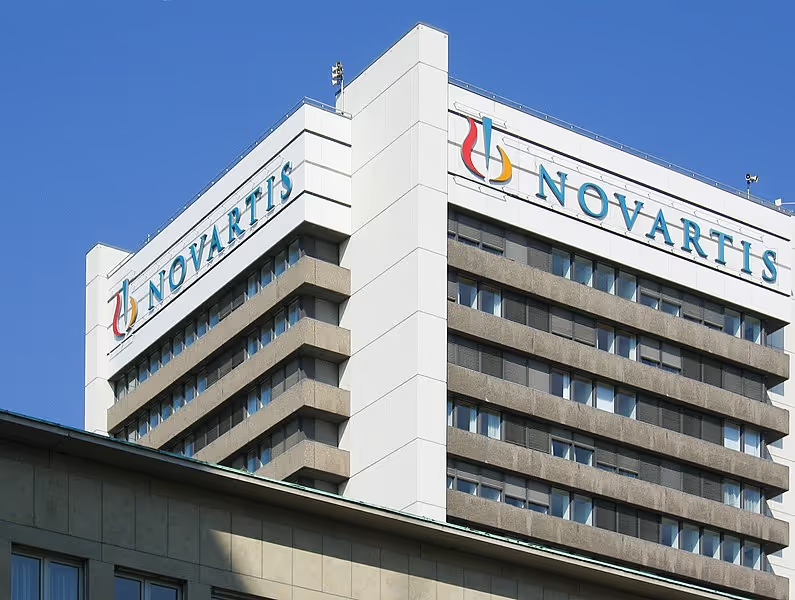
CSL’s Notable Merger With Novartis
Novartis, another leading name in the medical field, indicated to sell its influenza business to CSL in 2014. The existing subsidiary bioCSL at that time had provided over 1 billion influenza vaccines to the world.
CSL was planning to merge Novartis unit with its own to capture the 2nd spot in the influenza vaccine market of $4 billion.
CSL closed the deal at $275 for the Novartis influenza unit and its pipeline. The merger was subject to regulatory concerns, but CSL needed Novartis production technologies at any cost.
Novartis egg-based vaccines for pandemic and pre-pandemic phases were distinctive for CSL. The merger was a boon for CSL as combined bioCSL & Novartis operations could generate $1 billion in sales per year till 2018.
CLS Diversifies By Stepping Into Stem Cell Therapy
In 2017, CSL Behring acquired esteemed biotech player Calimmune along with its stem cell gene therapy platform for $325 million.
In this diversification attempt, CSL built a promise with its stakeholders to deal with rare and serious diseases. The acquisition complemented CSL protein-based therapy expertise. CSL Behring’s hematology wing had its strategic move with this acquisition resulting in work on sickle cell disease.
Calimmune’s novel platform technology realized CSL’s aim of dealing with challenges in the commercialization of gene therapies.
CSL Competitive Advantage: Launches Seqirus To Disrupt The Influenza Market
In 2015, when BioCSL and Novartis started working on their synergies, CSL made a clever move. It formed Seqirus, a company it has aimed to disrupt the influenza market by securing the 2nd spot by production and market share.
Novartis management went through a great investigation phase before handling everything to CSL. The reason was a plant in Holly Springs, a vaccine Flucelax, and the involvement of US institutions like Health & Human Services and BARDA. Indeed, Novartis found only an influenza business owner in CSL but also a growth-oriented company with the commitment to protect public health through R&D.
In 2018, the U.S government helped CSL’s Seqirus’s Holly Spring plant through a funding of $59 million.
CSL’s Diversification Continues Through Vitaeris & Vifor
Following its diversification trail, CSL exercised its partnership rights in June 2020 to initiate the acquisition of Vitaeris to enter the organ transplant business.
In 2017, CSL made a strategic alliance with Vitaeris for its work on the rejection of kidney transplants due to an antibody. Vitaeris was a clinical-stage biotech institution focusing on the 3rd-phase development of solid-organ transplant rejections.
In 2021, amid the COVID-19 pandemic, CSL went to buy Vifor for $11.7 billion.
CSL made the most important acquisition of its journey as the pandemic had hit the plasma products business hard. Vifor was a Swiss drugmaker working in the treatment of iron deficiency, cardio-renal and kidney diseases. Vifor had no synergy with CSL’s portfolio. CSL funded the deal with $5 billion in investments, $6 billion in debt, and cash of $2 billion. Vifor’s iron deficiency drug was an immediate earning injection to CSL.
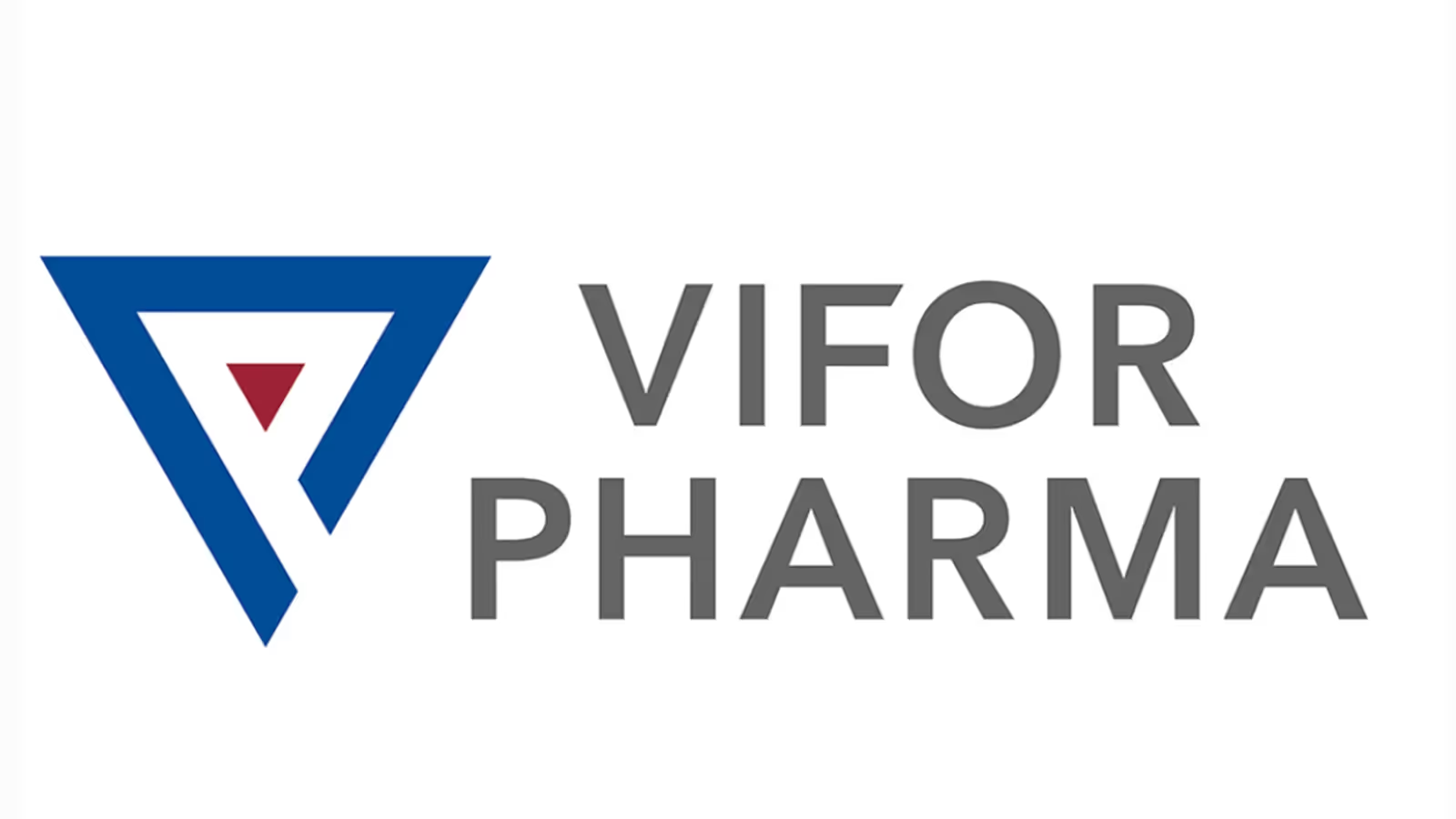
Key Takeaway 4: Scale Your Business With Strategic Partnerships & Acquisitions
Before the 21st century, most of CSL’s growth was built upon research and innovation.
Now, as the company looked to scale, it acquired or partnered with several established names in the country, which provided it with the talent, resources, and technology to develop and market its products much more efficiently. As a result, the company grew exponentially during this period.
CSL’s Digital Transformation Strategy Helps Counter Challenges Effectively
In 2016, CSL reported that most of its operations are computer-based, and information technology (IT) systems are essential to maintaining effective operations.
Yet, the company still had a long way to go, with shortcomings and opportunities becoming more apparent during the pandemic.
CSL Prepares To Go Digital
CSL’s IT Systems were exposed to risks of complete or partial failure of IT systems or data center infrastructure.
The inadequacy of internal or third-party IT systems due to failure to keep pace with industry developments and the capacity of existing systems to effectively accommodate growth, unauthorized access, and integration of existing operations.
Since then, CSL has developed numerous security controls for our IT systems and data center infrastructure that are based on its understanding of known threats and best practice industry knowledge. CSL employed robust IT Disaster Recovery planning, as well as Business Continuity Planning to mitigate operational interruptions.
The AI & Data Science Approach of CSL
CSL took a two-pronged approach to integrate Al into the organization in 2019-20.
Dozens of data scientists started working on projects throughout CSL as part of a Centre of Excellence on advanced analytics and Al.
Leaders in various parts of the company who were interested in launching Al initiatives comprised a Community of Practices that can consult the data science team to make sure their plan is the right one for their team and for CSL.
In April 2019, CSL brought together more than 150 of its data science stakeholders for the organization’s first-ever data science summit.
The gathering included presentations from CSL leaders on how CSL is integrating data science in everything it does, from developing lifesaving therapies to improving supply chain efficiency.
Cybersecurity Challenges For CSL
Maintaining the privacy and security of its patient, plasma donor, employee and company data is critical and at the forefront of all that CSL does. It is an essential risk to manage as of CSL’s 2030 strategy.
In 2020, CLS saw an increase in cyber threats against individuals and companies.
The nature of these cyberattacks is constantly evolving and can include sophisticated phishing scams and attacks on critical infrastructure.
The privacy and security of patients, donors, employees and corporate information may be compromised by breaches of CSL’s IT security and unauthorized or inadvertent release of information through espionage.
CSL continuously monitors and assesses its cybersecurity threats. It implemented robust and externally tested security controls for its IT systems and provided educational updates and training so that employees can recognize and properly respond to a cyberattack or report a privacy breach.
CSL’s Culture of Innovative Solutions
CSL's long-term effort to create an enterprise-wide culture of innovation delivered results in 2021 with new and unique approaches to address hurdles imposed by the global pandemic.
Drawing on digital expertise, the company was quick to implement strategies to keep employees connected amid travel restrictions and office closures.
CSL found new ways to collaborate, share knowledge and continue to develop and deliver its life-saving therapies to patients.
Beyond the pandemic, CSL aims to continue its ongoing digital transformation by developing new ways to connect patients to researchers and each other through online initiatives that demonstrate the company's patient focus.
CSL’s Responds To The Covid-19 Pandemic
In September 2020, the federal government of Australia went to CSL to make a deal to supply the University of Queensland vaccine against COVID-19 to the citizens.
The government also made CSL work with Oxford University for the Astra Zeneca vaccine. 85 million doses of vaccines were targeted.
CSL being an old player, had learned from its past. It said that agreement was contingent on the success of clinical trials of the said vaccines. The manufacturing process was to be done in Melbourne.
UoQ Vaccine Trails
A good share of University of Queensland vaccine trials failed as they produced “false positive” results for HIV in the participants. The failure resulted in the limitation of the vaccine program to phase 1, and phases 2 & 3 were canceled by the Australian Government and CSL. The UoQ team was disappointed as the Astra Zeneca team was asked to produce the vaccine order initially sent to UoQ.
AstraZeneca
In March 2021, TGA (“Therapeutic Goods Administration”), the prime regulatory body of Australian medical affairs, allowed CSL’s first batches of the Astra Zeneca vaccine.
There were a total of 0.83 million shots manufactured under CSL and the University of Oxford in Australia. Afterward, a total of 50 million AstraZeneca vaccines were given to CSL by the federal government.
Seqirus & CSL Behring
A drug study using CSL312 was already started by CSL Behring to cure cases of severe breathing difficulties, which is a major cause of mortality with pneumonia due to COVID-19.
Outcomes from a Phase 2 research to evaluate the possible treatment's safety and effectiveness are anticipated in the 2nd period of 2021. Participation in the research has already been finished as of 2022.
Seqirus has contributed its well-established additive expertise to the vaccine research programs of several organizations, including the University of Queensland. The business uses MF59 in their quadrivalent season flu vaccination for those over 65, one of the groups most susceptible to COVID-19.
Excipients can enhance immune reaction and lower the number of antigens required for each vaccination, allowing for the production of additional doses quickly. The COVID-19 epidemic has served as a stark reminder of the significance of producing seasonal flu vaccinations, which Seqirus continues to concentrate on.
CoVIg-19
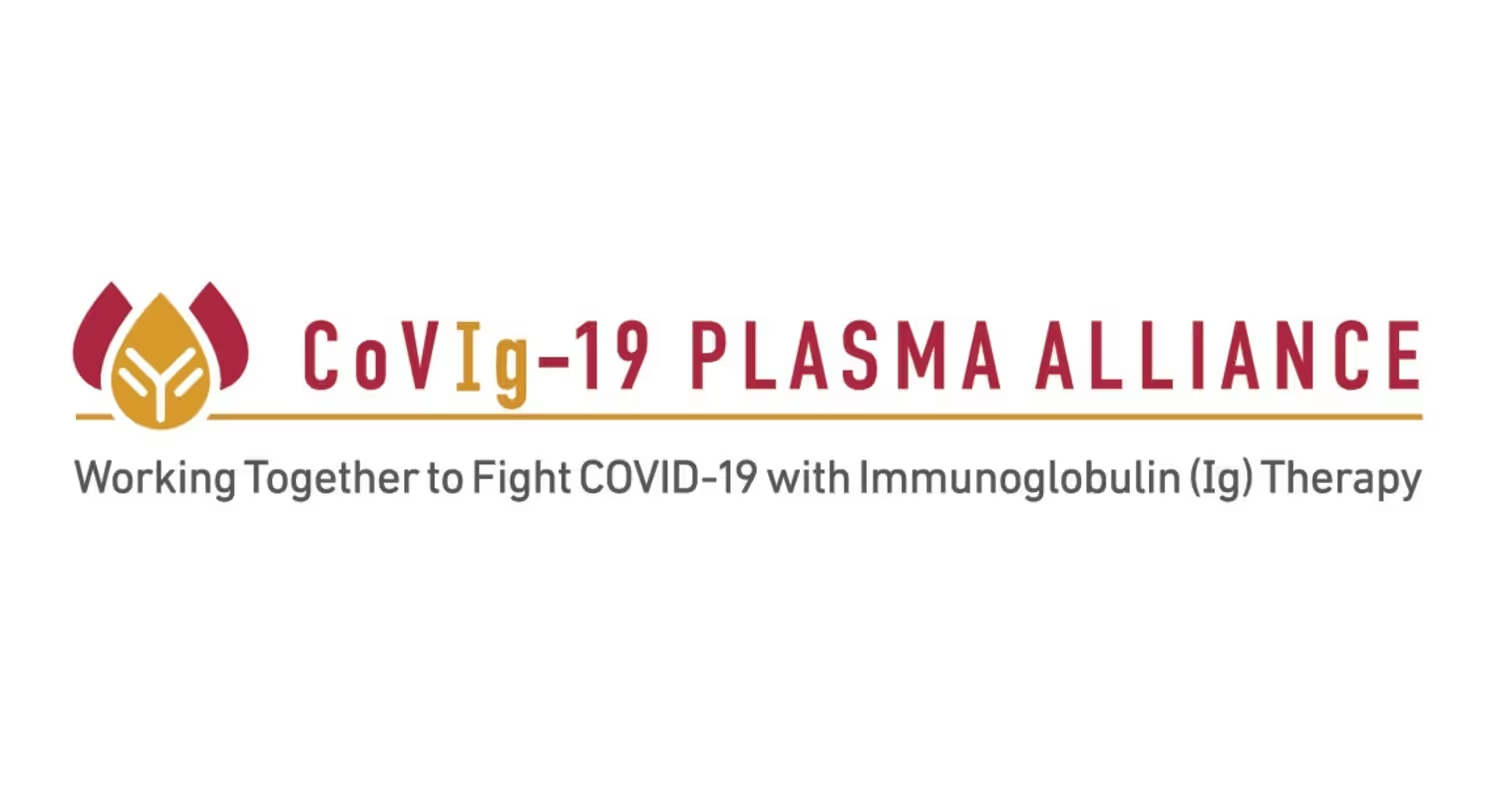
To create a possible plasma-derived hyperimmune treatment for COVID-19, CSL Behring co-founded the CoVIg-19 Plasma Alliance, a first-of-its-kind industry comprising 11 plasma businesses spread over 13+ nations and five continents.
After a Phase 3 clinical study of the possible medication failed to achieve its targets, the one-year agreement came to a halt in April 2021.
Additionally, CSL has stopped working on an Australian hyperimmune, whose progress was reliant on promising results.
Key Takeaway 5: Sometimes In The Digital Age, The Top Priority Is Cybersecurity
From customer information to company research, critical aspects of CSL’s operations are increasingly reliant on the strength of cybersecurity measures
Any breach or loss of data can result in significant financial and reputation losses for the company. Thus, protecting its data from cyber threats is as critical as investing in research and gathering that data.
Therefore, businesses must treat cybersecurity as a key part of their operations if they want to maintain their reputation in this ever-advancing tech world.
Why Is CSL So Successful?
For CSL, it all started with a promise, a vow to save lives and prevent serious human medical conditions through biotech.
Today, the company offers the most diverse plasm-backed and reunifying therapeutic solutions.
No wonder it is considered a global biotech leader.
CSL’s Purpose
CSL aims to save lives and protect the health of communities worldwide by developing and delivering innovative medicines.
CSL’s 5 Core Values
CSL continues to make a positive impact through its core values of:
- Superior performance
- Innovation
- Integrity
- Collaboration
- Patient focus
CSL’s Growth By Numbers
Key Strategic Takeaways From CSL’s Journey
There are several key takeaways from CSL 100+ years of growth, including:
Be The Market Leader With A Proactive Approach
One of the key reasons CSL has been able to stay on top for so long that it continuously focuses on developing products that other companies have yet not developed but may be very useful in the future.
Thus, from snake anti-venoms to COVID vaccines, the company has always been a step ahead of the competition and has been able to supply the products needed at critical times.
Make Your Business As Self-Dependent As Possible
Before CSL was formed, Australia was highly reliant on imports of medicine and vaccines. Thus, the company was formed by the government to provide a local, more efficient and dependable solution.
For several decades, this model proved to benefit both the company and the public. However, eventually, with the government having too much influence, the business could not make commercially viable and efficient decisions making, which negatively affected its progress.
Therefore, in 1994, when CSL became privatized, it eliminated independence from the government and came back on track to grow its operations.
Hence, restricting dependence on external factors, such as imports or the government, can enable a business to greater success.
Focus on Strategic Acquisitions To Increase Market Share
Over the years, CSL has worked hard to establish its name and reputation in the biotechnology industry by producing high-quality vaccines and cures. This allowed it to grow over time.
However, from there, the company realized that if it needed to accelerate growth and reach a dominant position, it needed to follow a more aggressive approach.
Thus, in the 21st century, CSL underwent several significant mergers and acquisitions with other established businesses allowing it to not only improve its efficiency and talent pool but also automatically increase its market share.
Incorporate Digital Solutions Into Operations To Maintain Position In The Market
For an industry that heavily relies on new and improved technology, biotech provides an opportunity for relatively smaller businesses to catch up with large businesses.
Therefore, if CSL wants to maintain its leading position in the dynamic digital world of today, it needs to keep investing in digital innovations such as AI and Cybersecurity to ensure it stays ahead of its competition.
And so do other businesses of all sizes in all verticals if they want to survive and thrive.
106 years and counting, CSL has progressed exponentially to become one of the biggest names in the biotechnology sector. What makes the company a resounding success story is its ability and commitment to developing innovative healthcare products to cure and treat some of the most feared diseases of our time. Through extensive R&D, capitalizing on opportunities, eagerness to improve human lives, and delight its customers, CSL has carved out its own unique pathway to success.


